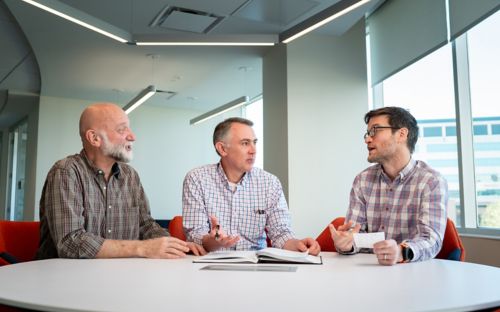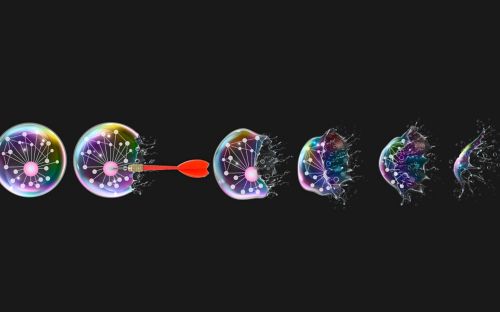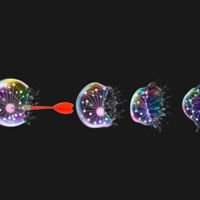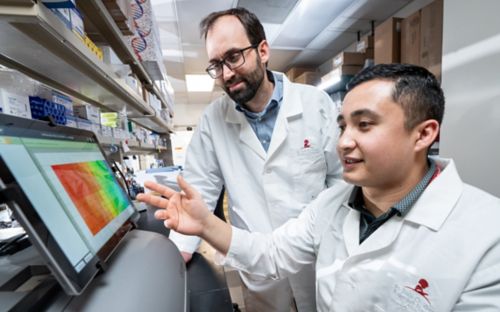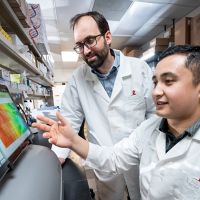Blazing through new territory to fight a devastating neurodegenerative disease
Dogged research efforts by St. Jude scientists stretching over four decades – along with a key collaboration among three departments – have paid off with the creation of a novel drug for a rare, life-threatening neurodegenerative disease that often begins in childhood.
The group’s efforts resulted in a new class of compounds potentially pivotal for treating PKAN, or pantothenate kinase-associated neurodegeneration. Researchers from four St. Jude labs pinpointed how a debilitating lack of coenzyme A (CoA) can trigger the condition – preventing neurons from functioning normally – and identified an alternate way to replenish CoA.
The results, published recently in Nature Communications, showed that the St. Jude-developed pantazines extended the lives and eased symptoms of mice with reduced neuronal CoA in brain. PKAN, is caused by mutations in the PANK2 gene and is thought to reduce CoA in neurons. The PZ-2891 compound temporarily locks alternative PANKs in the “on” position to promote CoA production. Affecting about three out of a million people, PKAN currently has no treatment and causes difficulty walking, chewing and swallowing.
“It’s a brand-new mechanism of action that’s never before been described,” said senior author Suzanne Jackowski, PhD, who conducted the research with Charles Rock, PhD; Stephen White, DPhil, of Structural Biology; and Richard Lee, PhD, of Chemical Biology and Therapeutics.
St. Jude has patented the pantazines and their use for PKAN and related CoA disorders, licensing the compounds to CoA Therapeutics which has begun planning human safety trials.
St. Jude Progress spoke about the study with Rock and Jackowski, who both joined the Department of Infectious Diseases at St. Jude in the early 1980s. Jackowski has studied CoA production and PANK genes for decades. In 1981, she and Rock – who are married – published research showing PANK played a pivotal role in CoA production in bacteria.
St. Jude Progress: What was the springboard for this study?
Rock: The first paper Suzy and I published at St. Jude was on the regulation of coenzyme A biosynthesis by pantothenate kinase. For many years, nobody knew the genetic basis for neurodegeneration in these patients. And then a group in Oregon did positional cloning and identified the affected gene in these patients. Lo and behold, the human mutations were found in pantothenate kinase 2, which is an enzyme encoded by a gene and protein we discovered and have been working on for many years. So that was the touchstone between the basic research piece and the patients. Suzy and I came up with this idea to use a chemical biology approach to activate the other pantothenate kinase enzymes that are present in the cell.
Jackowski: There are several pantothenate kinase enzymes in people. Whereas many lower organisms have just one pantothenate kinase, we have four pantothenate kinases that are encoded by three distinct genes. It’s the PANK2 that’s deficient in these patients. We thought we could possibly activate PANK1 or PANK3 or both to compensate for the loss of PANK2 activity.
St. Jude Progress: How did CoA become a major focus of your careers?
Rock: My career over the past 40 years primarily has had to do with lipid metabolism in bacteria and drug discovery and antibiotics. Suzy has been working on lipid metabolism and CoA metabolism. But the thing common to both of those fields is coenzyme A, the major cofactor involved in lipid metabolism. We became interested in this because in trying to understand lipid biosynthesis and how it’s regulated in mammals and in bacteria, you must understand how this cofactor changes. This led Suzy to discover, through looking at various phenotypes, how important control over coenzyme A levels is to metabolism in mammals.
Jackowski: It’s virgin territory. Nobody else was looking at this because they didn’t think it was important. But we realized that if we severely depleted the amount of coenzyme A in the mouse model, the animals couldn’t survive. I had to begin to prioritize the most critical processes affected by the depletion of this important cofactor, and it turned out not to be lipid metabolism, which was the umbrella focus for our laboratory for many years. It turned out to be energy production.
St. Jude Progress: You combed through more than 500,000 existing compounds and molecules in the St. Jude library over several years to identify a potentially effective PKAN drug. What criteria did you use?
Rock: First, it had to activate an alternate PANK enzyme. Finding enzyme inhibitors is relatively common and is what almost everyone in drug discovery does. But we were looking for the opposite of 99.9 percent of the drugs out there.
Jackowski: It also had to pass the blood-brain barrier after administration. This is a neurodegenerative disease, and patients have iron overload in the brain, a diagnostic feature picked up on MRI. Richard Lee insisted it had to be orally bioavailable, which I thought would be a great property down the line because we’re looking at a chronic treatment for these kids. We needed it to be something they could do easily in a home environment, and with low toxicity and so they’ll be taking this pill once a day..
St. Jude Progress: What drives you to devote your work to uncovering effective therapies for PKAN?
Rock: We’re in it because we’re good basic scientists, and we really like the project because it blazes a lot of new scientific ground. But in the end, getting something to help kids – it’s wonderful to be able to think you could be involved in that in your career.
Jackowski: You’ve got to do something if you can. We’re in a position where we could. We had an idea, and we had the wonderful resources here at St. Jude that allowed us to pursue this in addition to our other work to try to make a difference in these kids’ lives. Hopefully we’ll be able to help a lot of kids.

